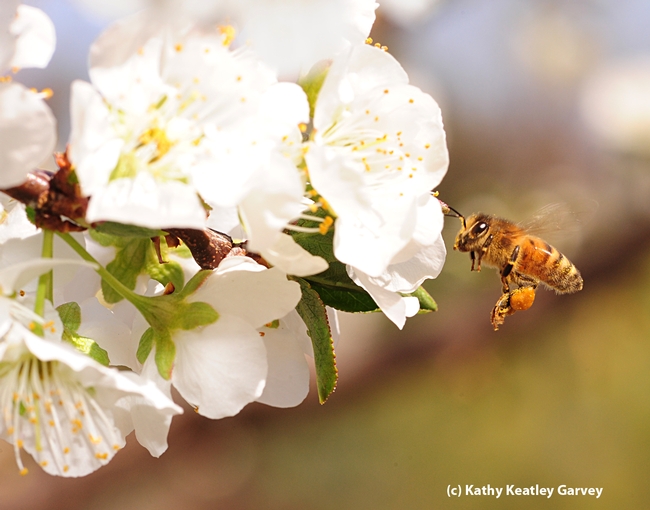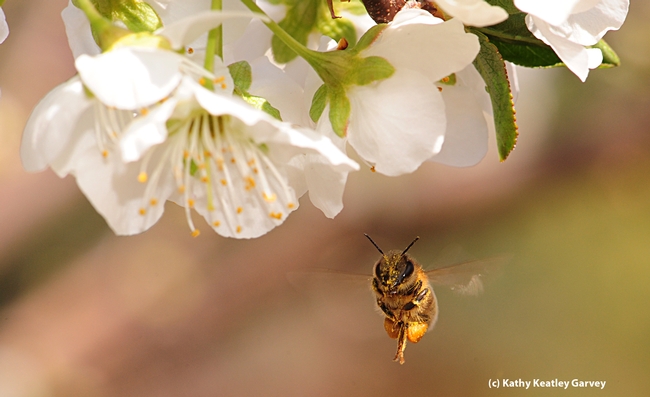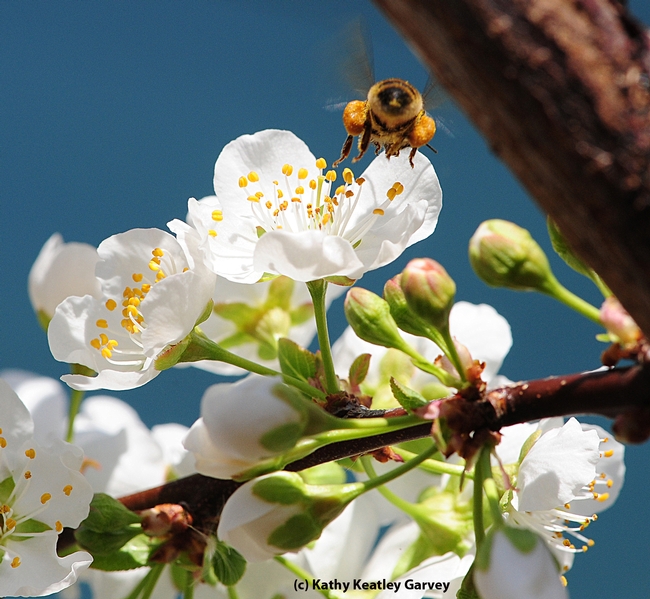Ever watched an in-flight honey bee packing her load of pollen?
A foraging bee carries her ball-like load of pollen on her hind legs and continually moistens it with a little nectar. The size and shape changes as she works. Sometimes you'll see BB-sized loads and at other times the pellets seem as large as beach balls. The color varies, depending on the color of the pollen she collects.
In the UC Agricultural and Natural Resources (UC ANR) publication, Beekeeping in California, (now out of print, but expected to be revised soon) the authors define pollen as "Male sex cells produced in anthers of flowers. Powderlike and composed of many grains, they are gathered and used by honey bees for food as a source of protein. A good mix of many different pollens is essential for adequate nutrition."
Humans use pollen as a supplement or as a way to desensitize the effects of hay fever. If you pick up a jar of pollen granules at your local health food store, the label is likely to read "All naturally occurring: vitamins, minerals, amino acids, carotenoids, bioflavonoids, phytosterols, fatty acids, and enzymes" and the like. Then there's the caution: "Bee pollen may cause allergic reactions in some sensitive people."
And the bees? The brood likes it just fine, except when it's toxic (California buckeye pollen is toxic to the larvae and can result in malformed, nonfunctional adults). Pollen contaminated with pesticides can also be life-threatening. Pesticides used on such crops as alfalfa, oranges, cotton, corn and beans can be hazardous to bees.
Meanwhile, a pollen-packing honey bee in flight is a sight to bee-hold.
Attached Images:


